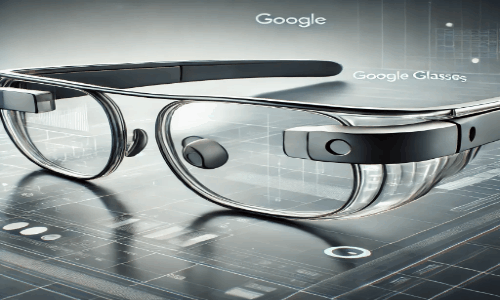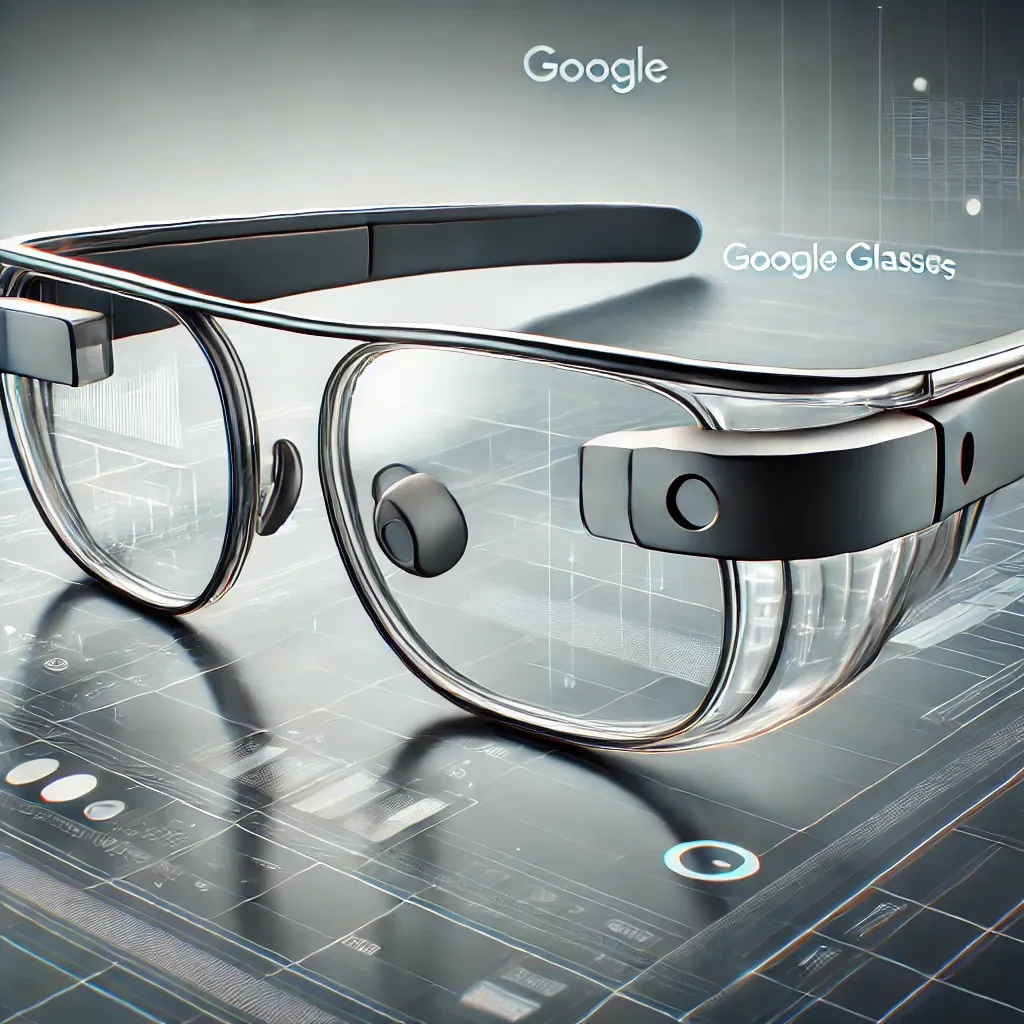Advertisements
Imagine a device capable of combining cutting-edge technology, artificial intelligence and a fully immersive experience — all in a simple pair of glasses.
Advertisements

Google Glass is more than just a futuristic accessory. It represents a true revolution in the way we interact with the world around us.
With advanced features ranging from voice commands to integration with smart apps, these glasses redefine the concept of “wearable technology”.
Companies, professionals from different areas and even ordinary consumers are discovering how this innovation can transform everyday tasks and even complex processes, with agility and precision.
Advertisements
But how does Google Glass work? What are its practical applications in everyday life? And, above all, how does it use artificial intelligence to stand out in the market?
In this content, we explore all of this in detail, revealing the impact of this technology in the present and future.
Discover why Google Glass is a key piece in the evolution of wearable technology 👓, and understand how it could be shaping the future of human and digital interactions. 🚀

What is Google Glass and how is it redefining wearable technology?
Let’s get straight to the point: Google Glass isn’t just a pair of glasses with built-in technology. It’s actually a mix of futuristic style and artificial intelligence (AI) that promises to change the way we interact with the world. These smart glasses are equipped with a small display in the corner of the lens, a camera, microphone and sensors that capture information from the environment around you. But the most impressive thing? It processes all of this in real time to provide you with useful and contextual data, like a kind of “personal assistant” on the tip of your nose. 😎
This technology is based on augmented reality (AR), which means it overlays digital information on the physical world. So, imagine walking down the street and getting directions, information about stores or even translating signs instantly, all while keeping your hands free. It sounds like something out of a sci-fi movie, right? But it’s 100%, real and working.
Google Glass has undergone some transformations since its initial launch in 2013, when the first version was seen more as a prototype for geeks. Now, with the Enterprise Edition versions, it is being adopted in sectors such as healthcare, industry and even logistics. And most interestingly, the AI integrated into the device is becoming increasingly advanced, enabling new uses that previously seemed impossible.
Why is Google Glass different from other wearables?
If we think in terms of wearable technology, like smartwatches or smart headphones, Google Glass is in a whole new league. That’s because it not only collects information, but also interacts directly with the environment. Want a practical example? Imagine a doctor using Glass to access a patient’s history while performing a consultation. Or a field technician who, with their hands full, receives visual instructions directly on the lens. That’s what makes Glass shine: it’s practical and delivers immediate value.
- Dynamic visual interface: Instead of looking at a screen, you see information directly in your field of vision.
- Hands free: Unlike cell phones or watches, you don't have to stop what you're doing to access information.
- Natural interaction: voice commands and integrated AI make the experience fluid and intuitive.
Plus, integration with systems like Google Assistant and Google Lens takes the experience to the next level. You know when you see something interesting and want to search for it right away? With Google Glass, all you have to do is look and speak. 🔍

Artificial Intelligence in Google Glass: How does it work?
The AI in Google Glass is what makes all of this possible. We’re talking about machine learning, natural language processing, and computer vision working together to provide an almost magical experience. But don’t worry, I’ll translate it into everyday Portuguese. 😉
When you wear Glass, it analyzes your surroundings in real time. Let’s say you’re in a logistics warehouse. Glass can scan QR codes or barcodes, identify objects, and even suggest the best path to complete a task. It does this because the built-in camera captures images and videos, which are analyzed by AI to generate immediate insights.
Another strong point is voice recognition. The AI understands your commands naturally, as if you were talking to someone. Want to take a photo? Just say, “Okay, Glass, take a photo.” Need directions? “Okay, Glass, how do I get to X Street?” The response is fast and efficient, because the device is always connected and ready to respond.
AI in everyday life with Glass
Let's look at some practical ways to use this AI in everyday life:
- Real-time translation: Imagine traveling to another country and being able to translate signs and menus instantly.
- Visual assistance: Ideal for people with mild visual impairments, Glass can describe what's around you.
- Remote collaboration: Engineers or technicians can share what they see with colleagues elsewhere to solve problems together.
And the cherry on top? AI continues to learn as you use your device, making the experience increasingly personalized.
Google Glass in Practice: Game-Changing Use Cases
Okay, so you understand that Google Glass is full of possibilities, but where does it really make a difference? Let's explore some real-world scenarios in which it is revolutionizing industries:
Health and medicine
In the healthcare sector, Google Glass has been a powerful ally. Surgeons, for example, can use the device to access critical information during an operation, without having to look away from a screen. Another interesting use case is in telemedicine, allowing doctors to view and share medical images in real time.
Oh, and let's not forget medical education. Medical students can watch surgeries first-hand, as if they were right next to the surgeon. This takes learning to a whole new level.
Industry and logistics
In manufacturing, Glass helps workers perform complex tasks by following visual instructions. Imagine a maintenance technician who receives step-by-step instructions on how to fix a machine directly on the lens. Or a stockroom operator who can locate items in seconds thanks to information superimposed on the display.
- Increased efficiency: less time wasted searching for information or tools.
- Security: With their hands free, workers can fully concentrate on the task.
Education and training
Another area where Google Glass is shining is in education. It enables immersive learning experiences, such as simulations or even virtual tours of historical sites. Want to learn how to fly a plane? Glass can guide you through the process with detailed, visual instructions. 🛩️
Privacy and Challenges: The Other Side of the Coin
Not everything is rosy in the world of Google Glass, and it’s important to talk about the challenges too. One of the main concerns is privacy. Because the device has a built-in camera, there are concerns that it could be used to record people without their consent.
Google has, of course, implemented some solutions to minimize these issues. For example, Glass emits a light when it’s recording, so people know they’re being filmed. In addition, there are policies for use in environments like movie theaters and classrooms, where the use of the device may be restricted.
Technical limitations
Another challenge lies in the technical limitations. Battery life, for example, still has room for improvement, especially with heavy use. And although the device is compact, it may still not be as comfortable for prolonged use.
- Price: the technology is still expensive, which limits access for many consumers.
- Adaptation: Like any innovation, it takes time for people to get used to using it on a daily basis.
Despite these issues, the potential of Google Glass is undeniable. With each new version, the technology advances, and these challenges become smaller.

What to expect from the future of Google Glass?
With the advancement of AI and augmented reality, the future of Google Glass looks bright. The technology is evolving rapidly, and there are already rumors of even deeper integrations with the Google ecosystem, including the use of generative AI. 🧠
Imagine a Glass that can not only guide you through a new city, but also create a personalized itinerary based on your interests. Or a device capable of helping people with more complex disabilities, such as motor difficulties, to perform everyday tasks with greater autonomy.
And it’s not just Google. Companies like Apple and Microsoft are also getting into the smart glasses race, which should accelerate innovation in the industry. Soon, we may see this technology become as commonplace as smartphones are today.
So, keep an eye out. Google Glass could be just the beginning of a technological revolution that will completely change the way we interact with the world. 🚀
Conclusion
THE Google Glass represents a milestone in the interaction between humans and technology, bringing the future literally to the tip of our nose. 🌟 Combining the powerful Artificial intelligence With an innovative design, this device goes beyond a simple accessory; it redefines how we experience connectivity, productivity and even entertainment. In an increasingly digital world, where integration between devices and users is essential, Google Glass emerges as a revolution that promises to transform not only the way we see technology, but also how it sees us. 👓
Furthermore, by combining practical features with an immersive experience, Google Glass not only simplifies everyday tasks, but also opens a new chapter in areas such as healthcare, education and business. This means that the future of technology is more accessible than ever. 🚀 However, it is important to highlight that, as with all innovation, conscious and ethical use is essential to reap all the benefits without compromising privacy or security.
Ultimately, Google Glass symbolizes more than just a gadget; it’s a glimpse of what’s to come in the field of wearable technology. Are you ready to see the world through new eyes? 😉

